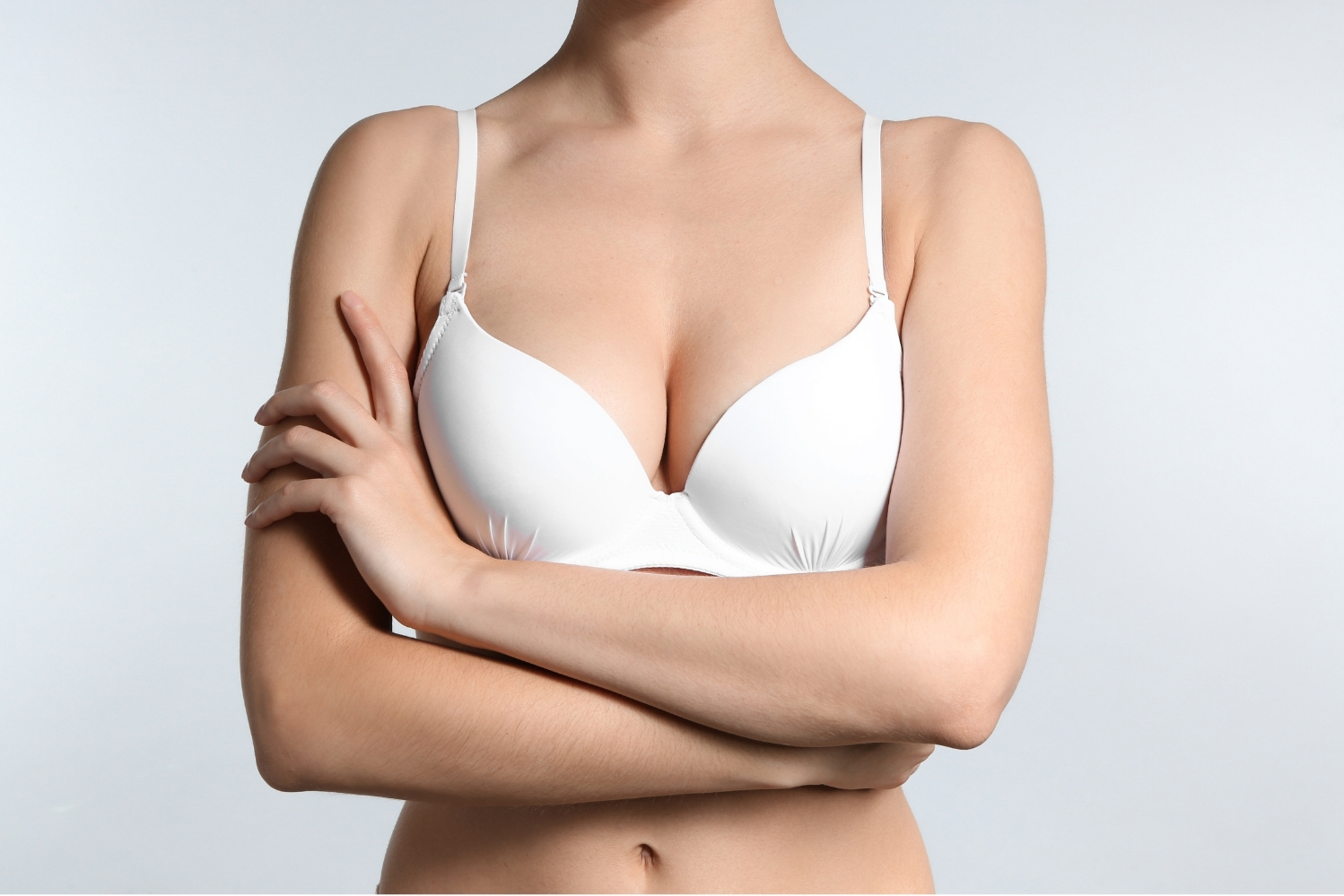IS BREAST AUGMENTATION WITH IMPLANTS RIGHT FOR YOU?
Feeling a mix of apprehension and nervousness about undergoing breast augmentation surgery is completely normal. Fear of the unknown is natural, which is why I wrote this guide to help you better understand the procedure and feel more at ease.
I hope you find this information helpful! The details below will also assist you in evaluating your doctor during your initial consultation.
GUIDE TO BREAST AUGMENTATION WITH IMPLANTS
One of the most popular and safest plastic surgeries, breast augmentation has a long track record of success and continues to benefit from advancements in technology, as we’ll discuss below.
WHAT SIZE IMPLANT SHOULD I CHOOSE?
The size of the silicone implants you choose will depend on your height, shoulder and hip width, and the amount of breast tissue you already have. It also depends on the effect you want to achieve.
To help you decide, we’ve outlined three size ranges below. Identify your preferred range and discuss it with your doctor during your consultation.
Tip: The taller and broader you are, the larger the size you might consider, possibly at the upper limit of one range.
Up to 240 ml – DISCREET EFFECT
Implants of up to 240 ml produce a subtle effect, noticeable primarily without a bra. This size is ideal for individuals with narrow shoulders or petite frames.
Tip: Choose a high-projection implant from a reputable brand to ensure an attractive result, even with smaller implants. Ask your doctor which brands they use and which offer the best projection.
240 ml to 340 ml – MODERATE EFFECT
This is the most popular size range, typically creating a final breast size of 42 to 44, depending on the amount of natural breast tissue.
These implants provide a beautifully enhanced look without being overly heavy, which helps maintain the shape and position of the breasts over time.
Over 340 ml – ENHANCED EFFECT
Implants larger than 340 ml are suitable for individuals with broad shoulders, taller frames, or minimal natural breast tissue. Sizes up to 380 ml or 400 ml are common, while larger sizes are less frequent.
It’s important to care for your skin and wear supportive bras regularly, as the added weight of large implants can lead to sagging over time. This size is not recommended for those with very lax skin or for individuals undergoing a breast lift (mastopexy).
Tip for size selection: Implant sizes differ by manufacturer. A 300 ml implant from one brand will have a different diameter and height compared to another.
Ask your surgeon which brands offer the highest projection and which they typically use. High-projection, smaller-volume implants can deliver the desired look without the added weight, reducing the chance of complications and leading to smaller surgical scars.
WHAT IMPLANT SHAPE SHOULD I CHOOSE?
The most popular implant shape is round, as it creates fuller cleavage. In Brazil, cone-shaped and anatomical (teardrop) implants are less common, but if you’re unsure, ask your surgeon to show you all the options during your consultation.
Cone-shaped implants were widely used in the past and provide a natural, subtle look with less cleavage. Teardrop implants can also be beautiful and are ideal for individuals seeking a discreet and natural appearance that doesn’t look like implants.
Valuable tip: Request before-and-after photos of all three implant types to better understand their results.
If you want cleavage and a fuller look in your bra, round implants are the best choice and remain the most popular option.
DOES PLACING IMPLANTS UNDER THE MUSCLE MAKE THEM LAST LONGER?
No, it doesn’t. For some time, this was believed to be true, but studies have shown otherwise. Some websites still share outdated information on this topic.
In the under-the-muscle approach, the lower part of the pectoral muscle is detached and hangs loose like a curtain. This doesn’t provide additional support for the implants. Moreover, the surgery takes longer, and recovery is slower due to the incision in the muscle.
The best approach is to follow your surgeon’s recommendation based on your individual case.
WHAT IS A POLYURETHANE IMPLANT?
All breast implants are filled with silicone gel. The outer shell is also made of silicone, a thin yet durable layer designed to minimize adverse reactions.
Two manufacturers (SILIMED and POLYTECH) developed a polyurethane foam-coated implant, with the same silicone interior. This innovation reduces the risk of capsular contracture and enhances adhesion to surrounding tissues.
Polyurethane implants are often recommended for patients with significant breast laxity, such as those who’ve undergone bariatric surgery or experienced substantial weight loss, or in cases of severe sagging after pregnancy.
WHAT IS THE BEST INCISION LOCATION?
Having used all three types of incisions, I strongly believe the inframammary incision is the most suitable for Brazilian women, and there’s a good reason for this.
Axillary and periareolar incisions can also work well but tend to leave more visible scars.
The inframammary incision, combined with proper postoperative care, such as silicone strips and scar-reducing creams, results in a fine, barely noticeable scar.
Ask your surgeon which incision they recommend and why. Also, inquire if you have the option to choose a different incision type. The most important thing is that you feel comfortable with the future scar, regardless of its size.
Dr. Alexandre Charão sees patients in Rio de Janeiro and Petrópolis. For more information, feel free to get in touch.



